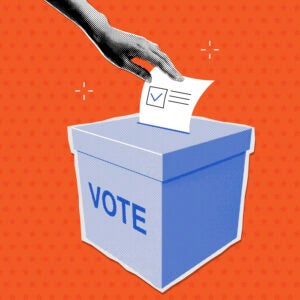 It’s been an odd presidential campaign, and this oddness has extended to the realm of political advertising. Here are three things to look out for as the primary season gives way to the general election.
It’s been an odd presidential campaign, and this oddness has extended to the realm of political advertising. Here are three things to look out for as the primary season gives way to the general election.
Is there enough TV inventory?
There’s just too much money to push down the throat of linear TV, and it’s got to go somewhere.
“At the end of the day, there’s going to be so much spent on TV they’re going to run out of inventory,” said Jim Walsh, co-founder and CEO of the liberal ad firm DSPolitical, at AdExchanger’s Programmatic.IO conference earlier this month.
“Brace for it, because it’s going to come, and it’s going to be a flood.”
David Seawright, director of analytics and product innovation at the Republican tech and data firm Deep Root Analytics, agreed there will be “a TV inventory crunch.”
Some local TV networks have adjusted the time allotted to ads during their newscasts to account for the demand, Seawright said. More local broadcasters will try ways to generate inventory, he added, particularly in battleground states like North Carolina, Pennsylvania and Colorado where there are Senate and gubernatorial elections this year.
“When you look at the overlay of presidential, senatorial and gubernatorial races, it doesn’t take long to realize there’s going to be more dollars than TV can absorb,” he said.
That bodes well for digital channels – which usually aren’t the beneficiary of big political dollars – as well as uber-traditional channels like telemarketing and radio. All of these mediums will see big gains from political activity this year.
The general assumption is radio has tracked down across the board in recent years, Seawright said, but “people would be amazed how much radio has increased its penetration, and how valuable it is in politics.”
A Nielsen report from March attributed political interest to a sharp increase in news/talk radio listeners as a share of the overall population in the past 18 months, reversing a yearslong decline through 2014.
Will Republicans, overly reliant on outside groups, run out of money?
The Republican party’s dependence on outside groups as a source for funds can be a benefit – donations directly to a single candidate are capped at $5,400, counting both the primary and general election, whereas super PACs can raise millions of dollars from a single donor – but it’s also a distinct disadvantage.
Federal election finance data shows Hillary Clinton’s and Sen. Bernie Sanders’ campaigns with a joint total of about $48 million in cash. Meanwhile, Donald Trump, Gov. John Kasich and Sen. Ted Cruz combine for $10.6 million on hand.
Cruz’s campaign is increasing its fundraising haul month over month, but he still brought in just $12 million in February, compared to Clinton’s $30 million and Sanders’ $43 million.
Republican media buyers have acknowledged a downturn in funds coming from super PACs, including the Koch brothers’ Freedom Partners organization and some of the most reliable Republican big-money donors, who say they’re sitting out the primaries after taking a drubbing on candidates like Gov. Scott Walker, Jeb Bush and Sen. Marco Rubio.
Meanwhile, the Republican National Committee is behind on fundraising targets, “describing the shortfall as a function of not having a clear nominee.”
But fee-hungry Republican buyers do have reasons for optimism. A small crop of super PACs now exists solely to oppose Trump, raising more than $10 million in the past two months. There’s also Cruz’s jump in fundraising and the Trump campaign spending more on marketing and data operations.
Many anticipate a renewed wash of ads once the primaries have passed, regardless of whether Trump, Cruz or someone else becomes the nominee. Plus, the outside groups stepping out of the Republican presidential primary ring are still investing in congressional, state and local races.
AOL advertising director Matt Ross, who manages the political ad sales group, said he’s seen increased interest in down-ballot races, though that money doesn’t get spent as early because voters frankly don’t care.
If Trump and Clinton win the primaries, how will their advertising strategies evolve?
If Trump wins the Republican nomination, he’ll need a more formal advertising strategy, said Jaime Bowers, digital advertising director at the Republican ad firm National Media.
“He’s been able to do a lot with earned media,” she said, “but that’s very effective for getting your name in front of people and bad at conveying a cohesive message, so he’d need a paid media plan to get his message out without that distortion effect.”
On the Democratic side, it’s already becoming clear how the shift to a general election will kick-start spending.
The email marketing platform LiveIntent works with Clinton’s campaign committee, and company President Jason Kelly said once the candidate has shifted from presumptive nominee to formal nominee, there’s going to be a huge, immediate need to consolidate her coalition with Sanders’ more progressive base. That change means whole new demographics and specific audience sets will move from opposition to acquisition.
One media buyer who represents the Clinton campaign but can’t speak publicly about campaign strategy noted that those hypothetical digital ad campaigns will be more valuable, as the shift from primary to general also means a demand for “persuasion advertising,” which requires lucrative video and audio.
“So far it’s been heavily about fundraising and in-state reminders to vote during primaries,” said AOL’s Ross, “but the big change for the general is you have to convince new voters, and that’s much more expensive.”













